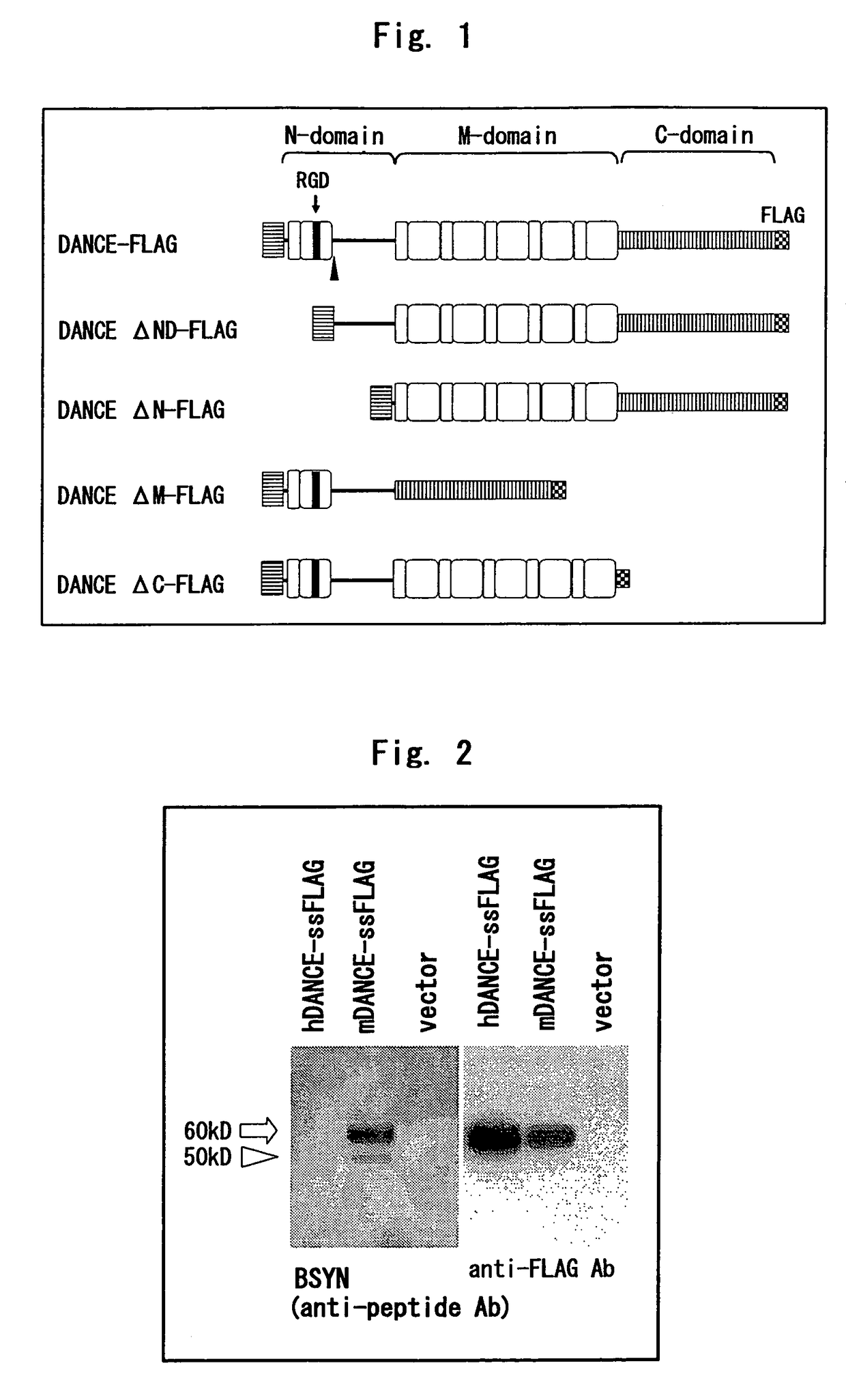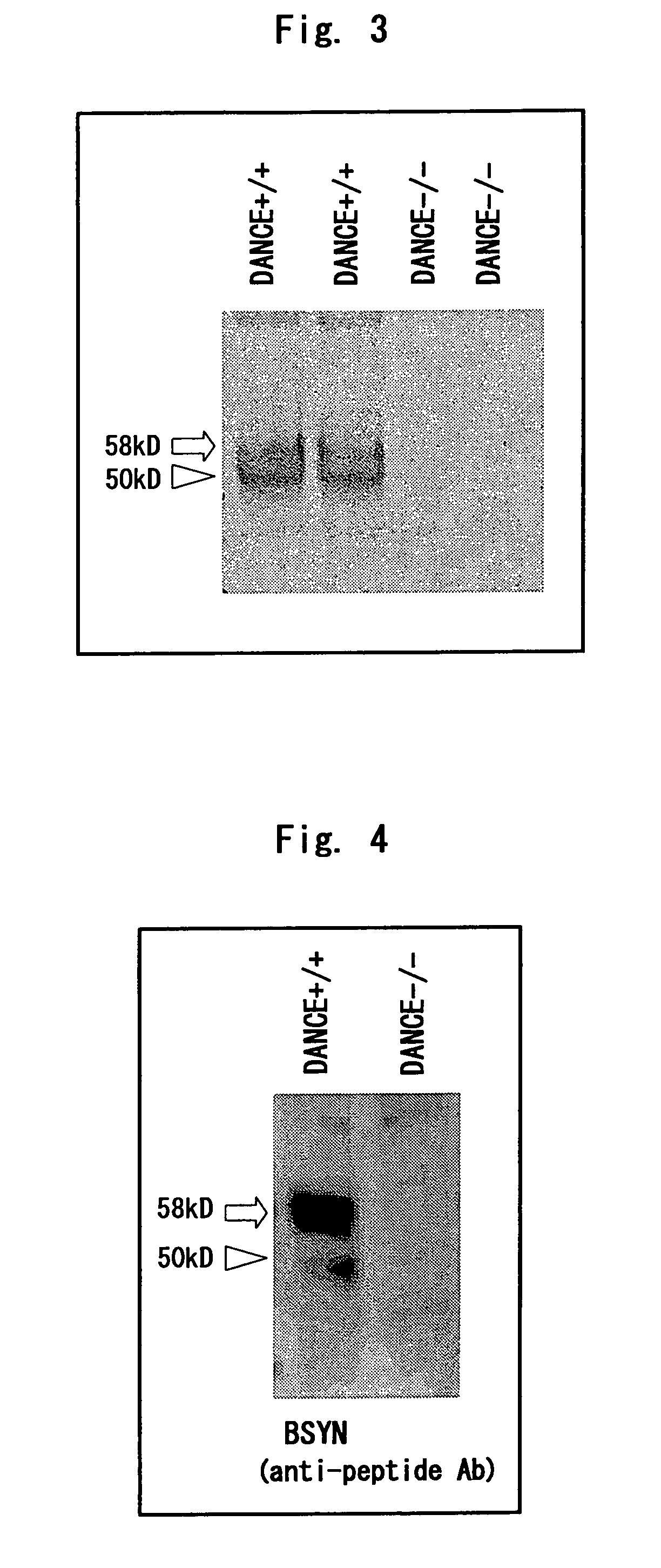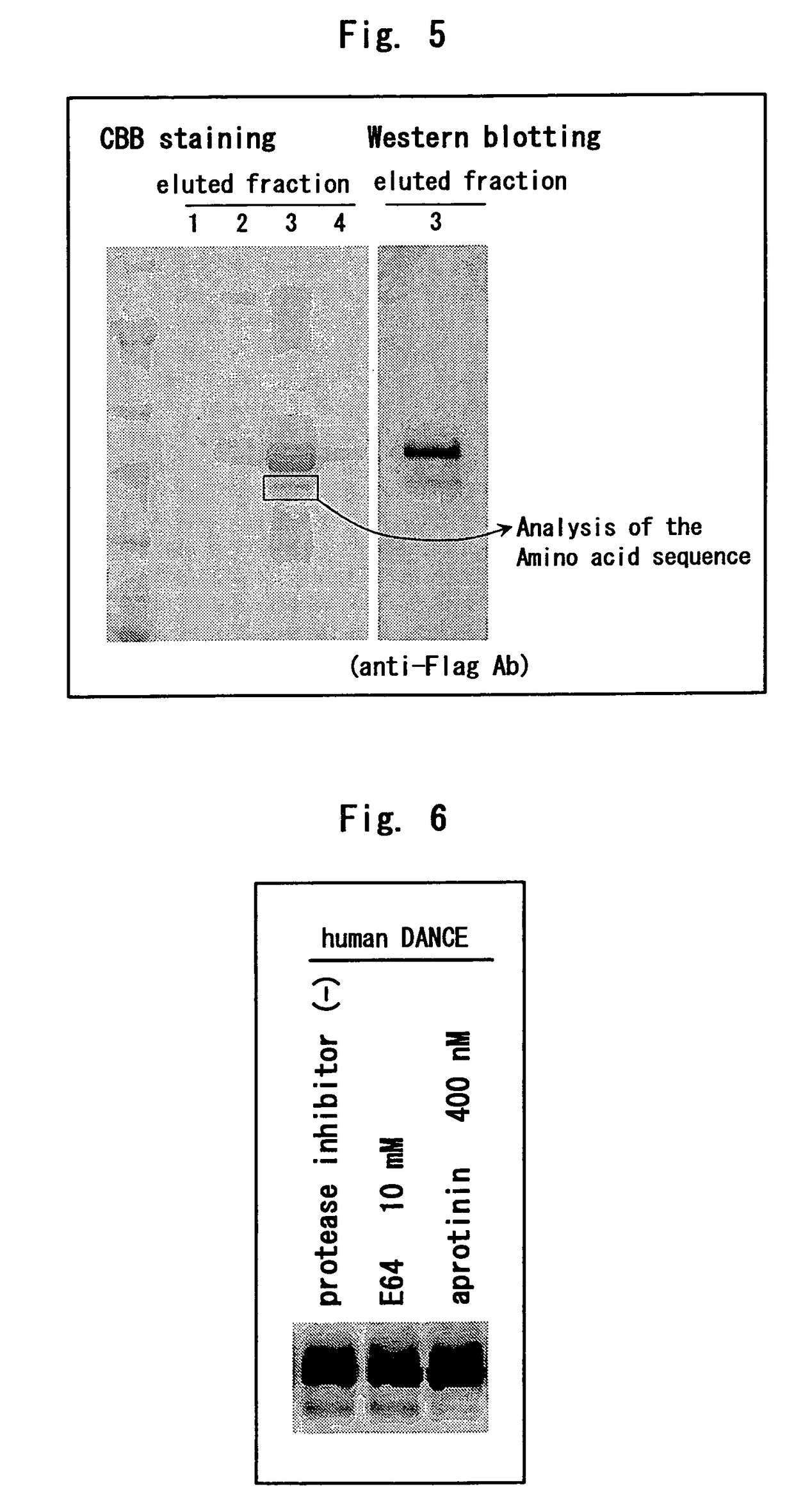Truncated DANCE, DANCE complex and method of using these
a technology of truncated dance and complex, applied in the field of polypeptides, can solve the problems of skin loosening, pulmonary edema, arterial sclerosis and snaking, loss of tissue elasticity, etc., and achieve the effect of enabling diagnosis
- Summary
- Abstract
- Description
- Claims
- Application Information
AI Technical Summary
Benefits of technology
Problems solved by technology
Method used
Image
Examples
example 1
Some DANCE has been Cleaved at N-Terminus In Vitro and In Vivo
1.1. Forced Expression of Human and Mouse DANCE in 293T Cells
[0225]Human and mouse DANCE cDNAs with FLAG tag added immediately downstream of the signal peptide cleavage site were transfected to 293T cells; after the medium was exchanged with serum-free medium, cultivation was continued for 48 hours, 15 μl of the culture supernatant was developed by SDS-PAGE, and Western blotting was performed. The antibodies used were BSYN obtained by immunizing a rabbit with a peptide corresponding to mouse the DANCE 76-98th amino acids, and anti-FLAG M2 antibody.
[0226]As a result, as shown in FIG. 2, BSYN did not recognize human DANCE, and mouse DANCE was detected as two bands. In contrast, anti-FLAG M2 antibody detected human and mouse DANCE as a single band.
1.2. Expression of DANCE in Mouse-Derived Skin Fibroblasts
[0227]Fibroblasts from skins of neonatal DANCE knockout mice [see Nature 415: 171-175 (2002)] and control mice of the same...
example 2
N-terminus of Cleaved Form of DANCE Agrees with the 78th and Following Amino Acids of DANCE
[0231]A human DANCE cDNA with FLAG tag and 6×His tag added to the carboxyl terminus thereof was transfected to 293T cells to establish a cell line showing stable expression. The recombinant DANCE was purified from 800 ml of the serum-free culture supernatant using Ni-NTA agarose (Qiagen), developed by SDS-PAGE, and stained with Coomassie-Blue. Of the major two bands, the band corresponding to the cleaved form of DANCE was cut out and analyzed by Edman degradation to determine the N-terminal amino acid sequence thereof (FIG. 5).
[0232]As a result, the N-terminal amino acid sequence of the cleaved form of DANCE agreed with the amino acid sequence at the 78th and subsequent positions of DANCE.
[0233]Hence, it was considered that this low-molecular protein is produced due to the cleavage of DANCE between the 77th amino acid and the 78th amino acid.
example 3
Cleavage of DANCE is Inhibited by Serine Protease Inhibitor
[0234]A human DANCE cDNA with FLAG tag and 6×His tag added to the carboxyl terminus thereof was transfected to 293T cells; the cells were cultured using a serum-free medium comprising a cysteine protease inhibitor (E64) or serine protease inhibitor (aprotinin) for 48 hours; a recombinant protein was precipitated from the culture supernatant using Ni-NTA agarose and was developed by SDS-PAGE and Western blotting was performed using anti-FLAG M2 antibody.
[0235]As a result, the cleavage of DANCE was not inhibited by E64 but inhibited by aprotinin (FIG. 6).
[0236]Hence, it was suggested that DANCE is cleaved by serine protease.
PUM
| Property | Measurement | Unit |
|---|---|---|
| pH | aaaaa | aaaaa |
| elastic | aaaaa | aaaaa |
| elasticity | aaaaa | aaaaa |
Abstract
Description
Claims
Application Information
 Login to View More
Login to View More - R&D
- Intellectual Property
- Life Sciences
- Materials
- Tech Scout
- Unparalleled Data Quality
- Higher Quality Content
- 60% Fewer Hallucinations
Browse by: Latest US Patents, China's latest patents, Technical Efficacy Thesaurus, Application Domain, Technology Topic, Popular Technical Reports.
© 2025 PatSnap. All rights reserved.Legal|Privacy policy|Modern Slavery Act Transparency Statement|Sitemap|About US| Contact US: help@patsnap.com



